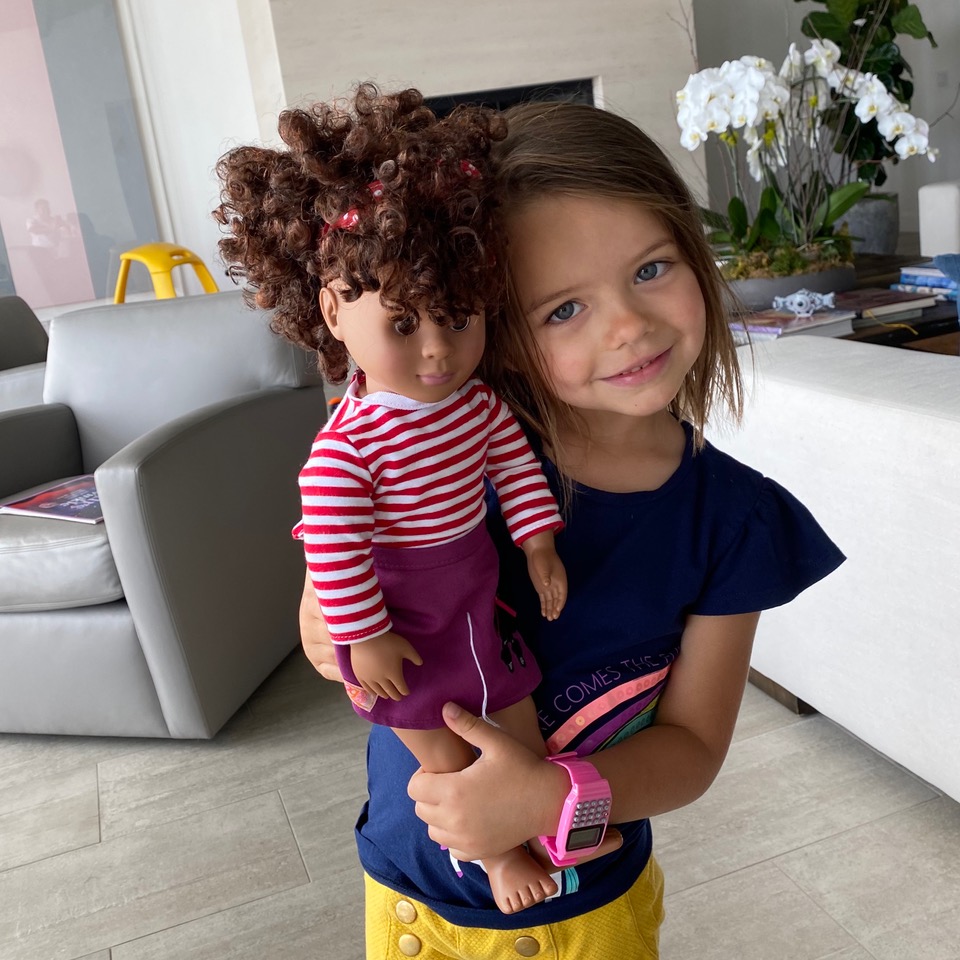
The doll in this photo is called Azlynn and is one of my daughter’s favorite toys. She was a gift from the children’s grandparents who live in Swaziland, Africa so her arrival was more coincidence than strategic planning on my part.
When I was pregnant and thinking about raising children I thought about gender. How to raise a boy so that he didn’t get caught up in “toxic masculinity” and how to raise a girl so she wasn’t just thinking about becoming, or looking like, a princess. I made sure to buy dolls for both my son and my daughter – and we’ve tried to not label things as “boy toys” or “girl toys” or “boy colors” or “girl colors”.
When I did buy dolls, however, I chose dolls that looked like my children – straight hair and white skin. It didn’t dawn on me that my kids would already be surrounded by children who looked like them, and that one easy step towards making our home environment more diverse, was to buy dolls and books that featured different skin tones and hair textures.
In retrospect I wish I’d been thinking about race in the way I was thinking about gender. It wasn’t that I never thought about race, I just didn’t think it factored massively into children’s toy and book purchases when it actually should have. It was a blindspot.
In many ways my job is about shedding light on parental blindspots. When I’m working with a client, I know I’m not just working with an individual. I’m working with the family system in which they grew up. I’m indirectly working with the parents and all the messages those parents passed on to their children. The most common parental blindspots are emotional ones.
We all have feeling states that we aren’t good at tolerating. And as parents unless we learn to feel those feelings we go down two pathways:
- We either become somewhat volatile parents who are at the mercy of our mood swings – whether they show up as anger, anxiety or depression – and those feelings spill out onto our children when we can’t contain them.
- Or we cut off certain emotions that feel uncomfortable or dangerous to us and then usually react negatively when we see those very feelings pop up in our children. (Which of course they will, partly because they’re just human emotions, and partly because our children usually absorb higher doses of the emotions we aren’t able to feel).
A little like my blindspot when I was buying dolls, the first step is just upping your awareness. A useful exercise to try if you’re not sure which emotions you’re not great at feeling, is to pay attention to the feelings your children (or work colleagues, family members, friends) are having when they’re triggering you the most. Those feelings that annoy you or get you upset when you see them in others, are likely the ones you need to work on tolerating and befriending in your own body.
